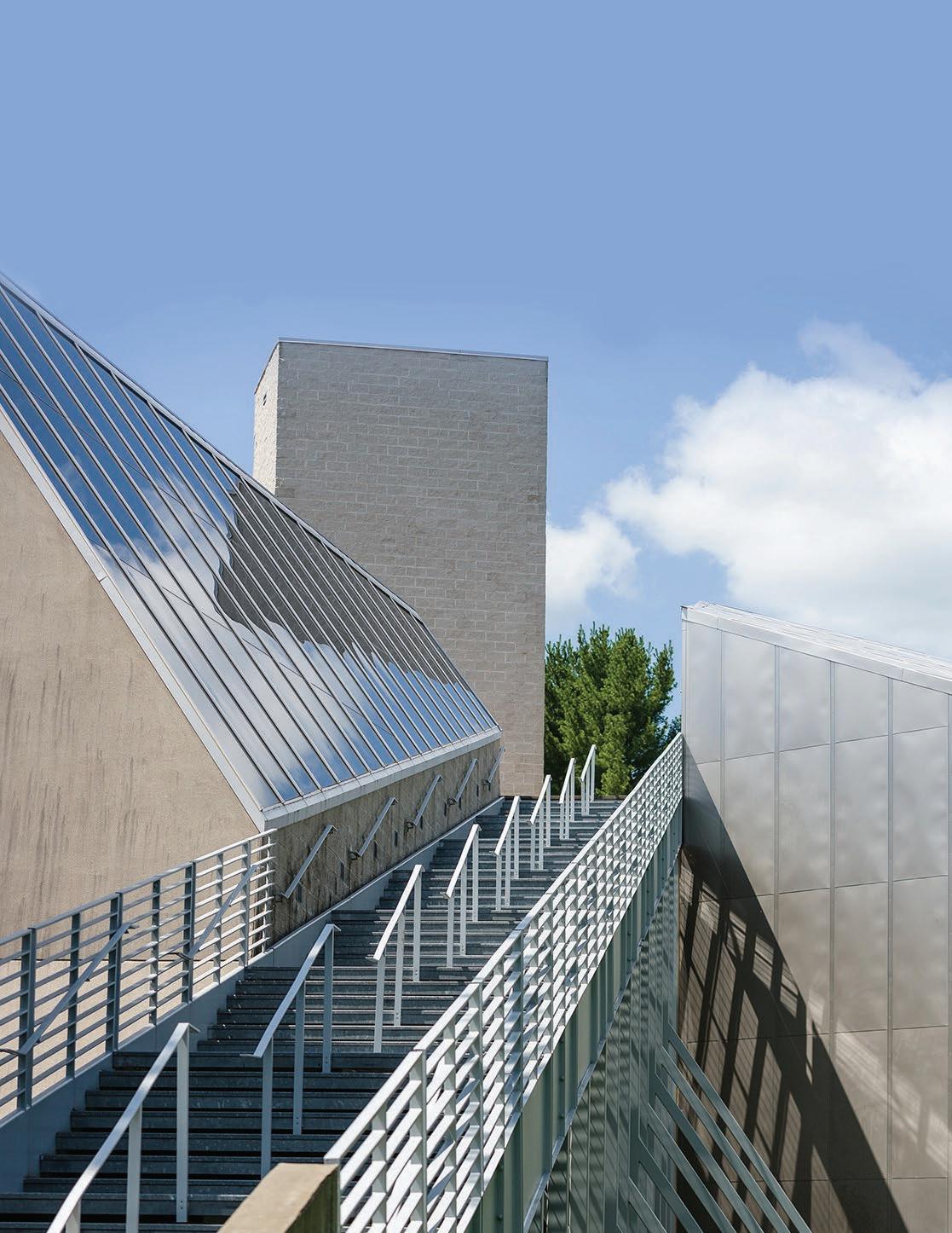
3 minute read
Creativity at Work
The Tang
The Frances Young Tang ’61 Teaching Museum
and Art Gallery has long been celebrated as a space that integrates the arts into every facet of academic and community life at Skidmore and also in our surrounding community.
Creating Our Future aligned with the museum’s second decade on campus, creating a moment to recognize and celebrate what the arts can do to enhance our lives and expand our minds, while simultaneously challenging us to envision a new and brighter future.
Over the duration of the Campaign, gifts to the Tang expanded collections and groundbreaking exhibitions through gifts of art, supported research, and paved the way for some remarkable ingenuity and interdisciplinary collaboration.
We’ve highlighted two examples of this work >
Give a damn.
exhibition
Give a damn. invited visitors to explore the work of artists who advocate for freedom, equality, justice, and understanding . A reflection of Skidmore’s broader efforts to support responsible citizenship, civic engagement, and social responsibility through the liberal arts, the exhibition was a powerful example of how interdisciplinary study at the Tang sparks inspiration for action through art .

Max Fleischman ’19, then president of Skidmore’s Student Government Association, used the exhibition as a platform for helping students register to vote and discuss topics of importance to them, both on and off campus . “An art exhibition dedicated to political work is really important,” said Max, a political science major with minors in history and gender studies . Jason Ohlberg, assistant professor of dance, choreographed an original dance, “Metamorphosis,” that was inspired by Lari Pittman, one of the artists “giving a damn .” His work was accompanied by an original music score by Carl Landa, Skidmore music director .
The exhibition included a primer for visitors moved by some of the exhibition’s core issues – racial injustice, gender discrimination, and more – to write to their elected officials . Written by Sophie Heath ’18, a classics major and gender studies minor, “Who Should I Write to About…?” became popular among visitors, including educators at all grade levels . The document is now a digital download for anyone to use to incorporate the information into civics lessons .
Like Sugar faculty-curated exhibition
Like Sugar followed a 20-year Tang tradition of supporting interdisciplinary faculty exhibitions as it asked us to consider how sugar and our powerful hunger for sweetness has impacted lives around the world both now and throughout history .
Experts in biology, environmental studies, art, and English came together to co-curate this collaborative experience that was both an immersive museum exhibit and a semester-long teaching opportunity for nearly every academic department and visitors . Together, the community engaged in conversations on the foundations of empires, the economics of slavery, global agriculture, health epidemics, food justice, and more .

The exhibition was also an opportunity for the faculty to infuse their own scholarship with new perspectives .
Monica Raveret Richter, associate professor of biology and a behavioral ecologist, came to the project to dive into an area of her research with new energy — food choices and their bioligical and environmental consequences .
Sarah Goodwin, professor of English and a British poetry scholar, reflected that she “hadn’t noticed sugar was everywhere” in her commonly researched texts until this project . “I suddenly saw the sugar trade — and slave labor — as a cornerstone of Great Britain’s empire and wealth . This exhibition reminded me how carefully chosen and arranged objects can change our thinking and transform us .”
But the greatest impact was seen among students, as Rachel Seligman, Malloy Curator at the Tang, reflected: “We saw firsthand how much our students benefit from us coming together from different disciplines to experiment and explore . It creates new energy and excitement, completely transforming research, art-making, and learning . ”









